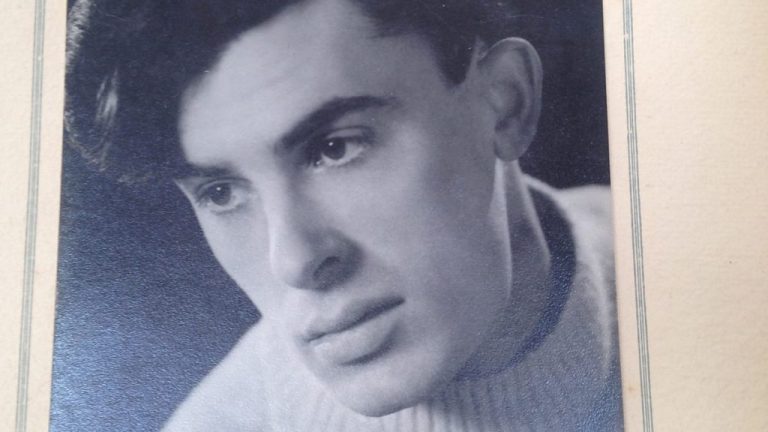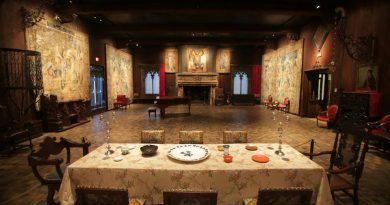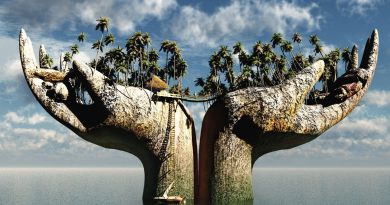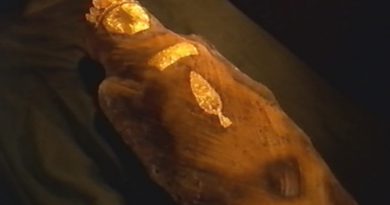Peter Gibbs’ Great Mull Air Mystery
The Great Mull Air Mystery is the name given by the media to the disappearance of Peter Gibbs on 24 December 1975 after he took an unscheduled solo night flight. Gibbs’ uninjured body was discovered, without the plane, on a hillside four months later but how and why he came to be there has never been established.
Norman Peter Gibbs was a former Spitfire pilot with No. 41 Squadron RAF. Flight Officer Peter Gibbs served with 41 Squadron between January 1944 and March 1945.
In August 1945, after he left the RAF, Gibbs became a professional musician and joined the Philharmonia Orchestra in 1954. In 1956, he had joined the London Symphony Orchestra.) Gibb’s tenure with the orchestra is notable for an incident which occurred during a tour of the United States in 1956. The Orchestra felt conductor Herbert von Karajan had been unprofessional when conducting smaller concerts during the tour.
The last straw came when von Karajan left the stage in Boston after the last note was played, neither waiting for applause nor calls for an encore. The orchestra was upset by this apparent slight to both them and the audience, but turned up nonetheless on time for an early rehearsal the next day. Karajan, however, came in late, much to the disgruntlement of the whole orchestra. When he finally arrived Gibbs stood up and addressed Karajan directly, demanding an apology. He rebuked von Karajan, stating, “I did not spend four years of my life fighting bastards like you to be insulted before our own Allies as you did last evening.” Karajan ignored him and continued conducting as if nothing had happened, however, that night during a concert, Karajan refused to go back on stage after the interval until a letter was signed stating that Gibbs be immediately sacked. The orchestra’s managers had little choice but to comply and Gibbs never played with the Philharmonia again.
Gibbs joined the Surrey Flying Club in June 1957 and then flew regularly for the next 18 years. He continued to fly in his civilian life and had held a private pilot’s licence and had over 2,000 hours flight experience. In later life Gibbs became the managing director of a property development company called Gibbs and Rae. Gibbs was 55 at the time of the disappearance and resided in London, England.
The Isle of Mull
On Saturday 20 December 1975 Gibbs travelled to the Isle of Mull, in the inner Hebrides, Scotland via ferry as he was interested in buying a hotel as an investment. Gibbs arrived on Mull with girlfriend Felicity Grainger, a 32-year-old university lecturer.
The couple were using the Glenforsa Hotel, on the edge of the sound of Mull, as their base as the hotel had its own 780 m airstrip and there were using a plane to fly between the Inner Hebridean islands. The couple were staying in room 14 and the hotel was busy despite it being winter.
Glenforsa Airfield
Glenforsa Airfield was built by the Royal Engineers between May and August 1965 to act as the only fixed-wing air ambulance evacuation facility on Mull. The airstrip is grass and at that time had no runway lights.
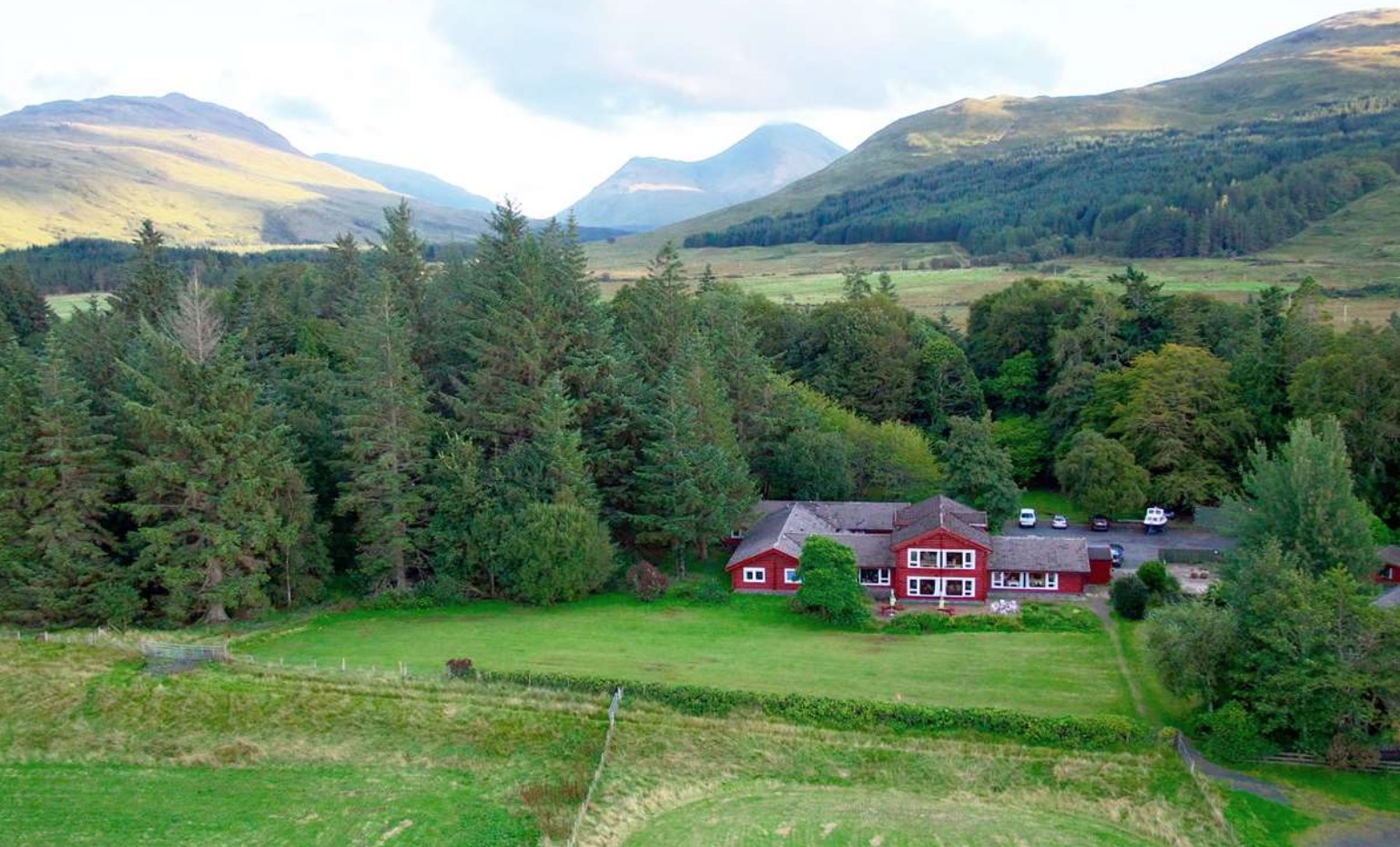
Peter also refused to use any landing lights, and he completely ignored local regulations that banned flying at night. Instead, he asked Felicity to stand on the airstrip with a torch to guide himself back to the hangar.
He took off—and he never returned. Felicity spent the next 30 minutes waiting for Peter on the airstrip before finally returning to the hotel. Employees then called the police to report Peter missing. Several hours later, on Christmas morning, a full-scale investigation was launched to find Peter’s body and plane. Helicopters and boats scoured the nearby waters, and hundreds of volunteers searched the island for signs. Nothing was found…
Then, in April of the following year, something utterly mind-boggling happened: Peter’s deceased body was discovered by a local shepherd near the Glenforsa Hotel. There was just one problem. The hill where Peter’s body was found had already been thoroughly searched by authorities months earlier, and local shepherds and farmers worked in that area every single day!
It would have been impossible for them to completely overlook the body of a deceased man for four straight months. Plus, his body was in relatively good condition considering it was supposedly four months old. What the heck was going on? Everyone who heard the news began to develop their own theories as to what could have happened to Peter. Still, these theories all left unanswered questions
One theory supposed that the plane crashed at sea and that Peter swam to shore only to die of exposure shortly thereafter. However, there were no traces of seawater or marine microorganisms found on his skin or clothing. Then there were others who suggested that Peter might have inexplicably jumped out of the plane, mid-flight. However, no parachute was ever recovered, making this idea also seem unlikely.
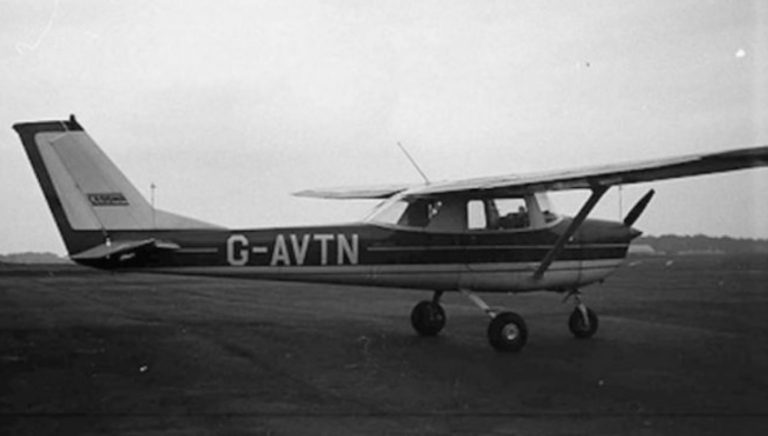
With few other details available, it must have seemed like Peter’s story was over. But then, in September of 1986, another startling discovery was made off the coast of Oban, a small town in Scotland. Two brothers named Richard and John Grieve, both of whom were clam fishermen, stated that they found a small Cessna plane about a kilometer off the coast that matched the description of Peter’s vessel. However, when salvage teams attempted to find what they were told may have been Peter’s old plane, it was gone. Had someone removed it? Had it been there in the first place? Yet again, Peter’s mysterious case hit a wall.
No one knew for sure what exactly happened to Peter Gibbs that stormy night, and perhaps nobody ever would. There were so many questions surrounding his death, and those mysteries would persist to this day…
Where had Peter’s body been hiding for the first four months before it finally appeared on the hill? And why was it in such good condition? As time went on, answers seemed less and less likely to emerge…
Day of the disappearance
On the morning of 24 December 1975 Gibbs and Grainger flew the from Mull to Broadford on the Isle of Skye to spend the day viewing properties. They flew back to Mull and had a dinner at the hotel that included whisky and red wine.
The flight
Gibbs and Grainger had just finished dinner at the hotel when Gibbs decided to take a solo flight. Gibbs borrowed two powerful torches to use as landing lights for Grainger to use them to guide him in.
Some guests present stated that they though they saw two people moving torches on runway, others observed that Gibbs appeared to have spent an unusually long time warming up the plane’s engine. Gibbs was observed to turn the plane lights off, then on, then off again. He then took off from the unlit airfield on a moonless night and, after the plane disappeared behind a line of trees, he was never seen alive again.
The hotel guests realised that Gibbs was intent on making a circuit and rushed upstairs to the bar to watch the landing as the airfield was almost never used at night. The guests turned the lights off in the bar to reduce internal reflections on the glass and get better view of the night flight. Grainger stood at the end of the runway holding the torches.
After 10 minutes Howitt began to worry, fearing that the plane had ditched, and went to try to find the plane. He drove to hotel’s Ford Cortina through the driving sleet to try to find Gibbs. Howitt dipped the cars headlights to illuminate the water but no trace of the plane was seen.
An organised search was mounted but no trace was found of Gibbs or the plane. The search was described as huge and extended over the Christmas holiday.
Discovery of the body
In April 1976, 4 months after the disappearance, Gibb’s body was discovered by a local shepherd, Donald MacKinnon. The body was found lying partway up a remote hillside about a mile from Glenforsa Airfield. The initial search for Gibbs had passed through this area at the time of the disappearance, but nothing had been found at that time.
The body was found lying across a fallen larch tree 400 ft up the hillside, not far from the road. Due to decomposition the only thing holding the body together was the clothing. The body was facing due north in a direction that indicated that Gibbs was walking down hill. The police had to cut a branch off the tree to remove the body.
The body was taken to Glasgow for the post-mortem. Gibb’s remains gave no clues to his cause of death. Only minor injuries were found and there was nothing to indicate a fall from a plane or any evidence that he died in other place and was left on the tree. According to the pathologists’ report the condition of the body was ‘entirely consistent with lying out there for a period of four months’. Forensic tests detected no salt or marine organisms in the Gibb’s clothing or boots. Gibb’s death was noted down by the pathologist as being due to exposure in the absence of any other evidence.
The discovery of body sent investigators looking for the plane on land, in woods and dragging lochs. No wreckage was found of the aircraft at that time.
Apparent discovery of the plane
In September 1986 it was claimed that the plane had been found in the sea off Oban. A clam diver searching for scollops reported finding a small plane with both wings missing. The wreckage was 200–300 m off the coast at the bottom of the sound of mull It was reported that the windscreen was out and both doors were locked. The aircraft yielded no clues as to how it came to be there. Gibb’s body was found in a location that was across a road and up a steep climb from the reported location of the plane.
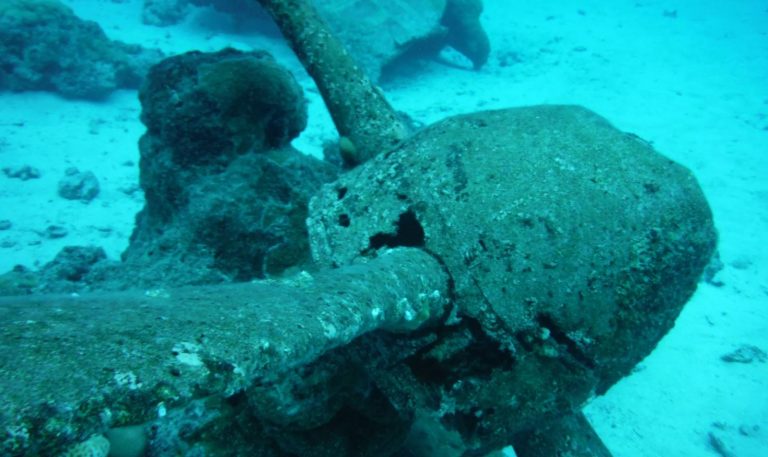
In February 2004 minesweepers HMS Pembroke, HMS Penzance and HMS Inverness were undertaking a coastal mapping operation in the waters off Oban and found a plane 30 m beneath the surface. HMS Pembroke used a remote underwater camera to take pictures of the wreckage which appeared to be of a small plane with one wing still attached, possibly Gibb’s Cessna, .
Source: Wiki
